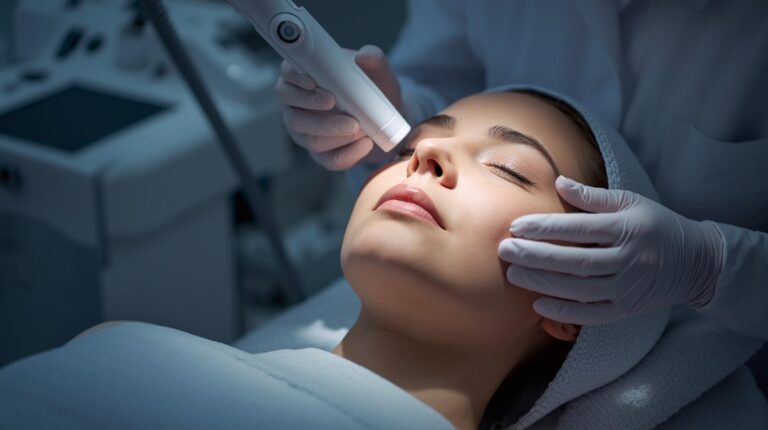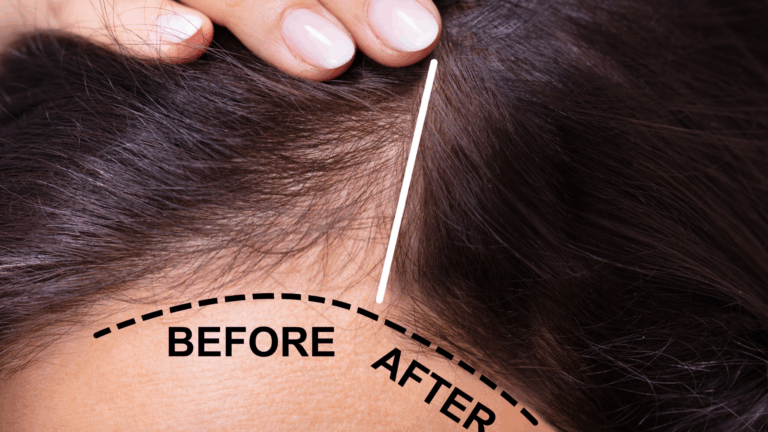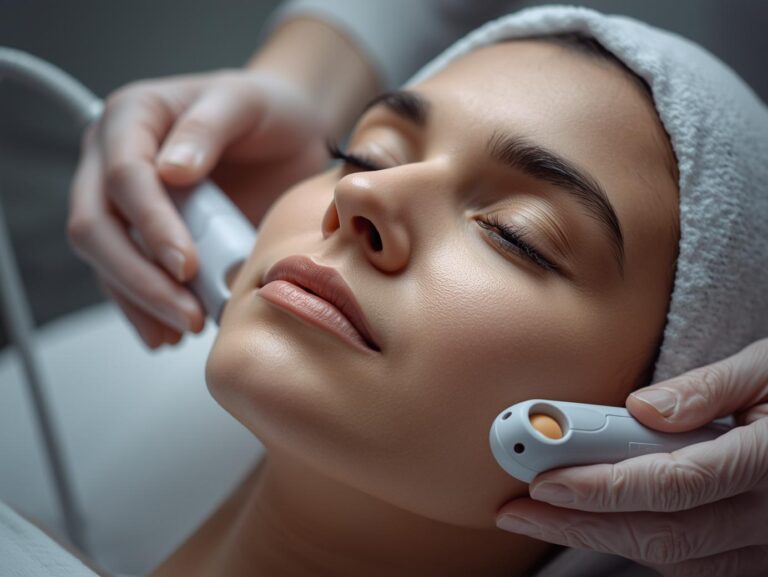12 Mistakes Everyone Makes Before Seeing a Dermatologist (And How to Avoid Them)
Booking an appointment with a dermatologist is a smart first step toward healthier skin. But what happens in the days leading up to that visit can either help your doctor make an accurate diagnosis—or make their job nearly impossible.
Most people unknowingly sabotage their consultation before they even walk through the door. From DIY treatments to last-minute panic decisions, these common mistakes can delay your diagnosis, worsen your condition, and cost you extra time and money.
Here are the 12 biggest mistakes people make before seeing a dermatologist—and exactly what you should do instead.
1. Trying Kitchen “Cures” and Home Remedies
When a rash appears or acne flares up, many people head straight to the kitchen. Lemon juice for brightening. Toothpaste for pimples. Baking soda as an exfoliant.
These DIY treatments seem harmless, but they’re often the worst thing you can do to your skin.
Why this backfires:
Lemon juice has a pH of 2, while your skin’s natural pH sits around 5.5. That extreme acidity can cause chemical burns, inflammation, and permanent pigmentation changes.
Toothpaste contains menthol, fluoride, and harsh surfactants designed for tooth enamel—not delicate facial skin. It dries out tissue, delays healing, and can leave dark marks after the blemish disappears.
Baking soda strips away your skin’s protective oil barrier, leaving it vulnerable to bacteria and irritation.
The real problem:
These remedies don’t just fail to work—they create new layers of damage on top of your original condition. By the time you see your dermatologist, they’re looking at burns, allergic reactions, and inflammation that weren’t part of the initial problem.
This masks the real issue and makes accurate diagnosis nearly impossible.
What to do instead:
Take a clear photo of your skin concern the moment you notice it. Then leave it alone. Your dermatologist needs to see the condition in its natural state, not buried under layers of self-inflicted damage.
2. Waiting Too Long to Book the Appointment
“It’ll probably go away on its own.”
“Maybe I just need to drink more water.”
“I’ll wait until after the wedding/holiday/busy season.”
Sound familiar?
Delaying professional care is one of the most common—and costly—mistakes people make. Most skin conditions are far easier to treat in their early stages.
The hidden costs of waiting:
What starts as a small patch of psoriasis might respond well to a topical cream if caught early. Wait six months, and you might need oral medications or light therapy instead.
A suspicious mole that could be removed in a 15-minute procedure might require more extensive surgery if it progresses.
Early-stage melasma might clear up with prescription cream. Advanced melasma could need multiple laser sessions costing ten times more.
The emotional toll:
Skin problems aren’t just physical. They affect your confidence, social interactions, and mental wellbeing. Every week you wait is another week of covering up, avoiding photos, and feeling self-conscious.
What to do instead:
Book the appointment as soon as a skin concern persists beyond 4-6 weeks, or immediately if you notice sudden changes, rapid spreading, or concerning new growths.
Don’t wait for the “perfect time.” Your skin health doesn’t care about your calendar.
3. Overloading on Over-the-Counter Products
When skin acts up, the instinct is to fix it fast. So you buy everything the pharmacy offers—acne cream, spot treatment, exfoliating scrub, soothing serum.
More products should mean faster results, right?
Wrong.
Why product overload backfires:
Many over-the-counter treatments contain potent active ingredients like salicylic acid, benzoyl peroxide, or retinol. Using multiple products means layering these ingredients, which can:
- Strip your skin’s protective barrier
- Cause severe dryness and irritation
- Trigger contact dermatitis
- Create new breakouts
- Make the original condition worse
Different active ingredients can also react badly when combined, creating chemical interactions that damage your skin.
The “more is better” trap:
Some people use these products multiple times daily, thinking it’ll speed up results. But skin cells regenerate on a natural cycle. Aggressive treatment disrupts this process and often slows healing instead of accelerating it.
What to do instead:
Simplify your routine immediately. Use only:
- A gentle, fragrance-free cleanser
- A basic moisturizer
- Sunscreen (if going outside)
That’s it. Bring any products you’ve been using to your appointment so your dermatologist can identify potential irritants.
4. Stopping Prescribed Treatments Too Early
You’ve been to the dermatologist before. They prescribed a cream or medication. It worked great—so you stopped using it.
Now the problem’s back, sometimes worse than before.
Why people quit treatment early:
The moment skin improves, many people assume they’re cured and discontinue the medication. But most treatments are prescribed for a specific duration to fully resolve the underlying issue, not just the visible symptoms.
Stopping antibiotics early can lead to bacterial resistance. Discontinuing steroid creams prematurely can cause rebound inflammation. Abandoning acne treatments too soon allows bacteria to rebuild.
The restart cycle:
When the condition returns, you’re essentially starting from scratch. Treatment takes longer the second time, and the condition may have worsened during the gap.
What to do instead:
Complete the full course of treatment exactly as prescribed, even after symptoms improve. If you have concerns about side effects or costs, discuss them with your dermatologist. Never make the decision to stop on your own.
5. Failing to Track Symptoms and Triggers
Your skin doesn’t exist in isolation. It reacts to weather, stress, diet, products, fabrics, and dozens of other factors.
Yet most people show up to their appointment with vague recollections: “It’s been bothering me for a while” or “It seems to come and go.”
Why this matters:
Pattern recognition is crucial for accurate diagnosis. If your eczema flares every time you use a specific laundry detergent, that’s diagnostic gold. If your acne worsens around your menstrual cycle, that points to hormonal causes requiring different treatment.
Without this information, your dermatologist has to guess—and treatment based on guesses is rarely as effective as treatment based on data.
What to track:
- When symptoms started (exact date if possible)
- How they’ve progressed (better, worse, or unchanged)
- What makes them better or worse
- New products or medications introduced before symptoms began
- Dietary changes
- Stress events
- Travel to different climates
- Changes in routine
What to do instead:
Start a simple skin diary one week before your appointment. Take daily photos. Note any changes in products, routine, or lifestyle. Bring this documentation to your consultation.
6. Wearing Makeup to Your Appointment
You want to look presentable. Maybe you’re coming straight from work. Maybe you feel self-conscious about your skin issue.
But wearing makeup to a dermatology appointment actively interferes with diagnosis.
Why makeup is problematic:
Even light coverage like tinted moisturizer or BB cream can mask:
- Subtle redness (rosacea indicators)
- Pigmentation irregularities (melasma, sun damage)
- Texture changes (early acne, rough patches)
- Lesions or growths your doctor needs to examine
Your dermatologist might end up wiping off your makeup anyway to properly assess your skin—wasting time and leaving you without the coverage you wanted.
Foundation can hide skin cancer:
Certain skin cancers appear as subtle color changes or barely noticeable irregularities. Makeup can completely conceal these early warning signs.
“If we wait until a cancer is bleeding, then it’s already found later than it could have been seen,” notes dermatologist Dr. Maya Thosani.
What to do instead:
Arrive with a completely clean face. If you absolutely must wear makeup beforehand, bring cleansing wipes and remove everything in the waiting room.
Pack your makeup bag and apply it after the appointment if you have plans afterward.
7. Forgetting Your Questions and Concerns
You’ve been thinking about this appointment all week. You have a dozen questions you want to ask.
Then you sit down with the dermatologist and suddenly… blank.
Medical appointments can be overwhelming. You might feel rushed, nervous, or simply forget what you wanted to discuss.
Why this matters:
Dermatology appointments often have limited time slots. If you spend the first ten minutes trying to remember your questions, you might miss the chance to address important concerns.
Walking out without answers leads to confusion about your treatment plan, anxiety about your condition, and sometimes poor compliance with recommendations.
What to do instead:
Write down every question before your appointment. Organize them by priority:
High priority (must ask):
- What exactly is this condition?
- What caused it?
- What’s the treatment plan and timeline?
Medium priority (should ask if time permits):
- Are there lifestyle changes that would help?
- Which products should I avoid?
- What are the potential side effects?
Lower priority (nice to know):
- Will this condition recur?
- Are there preventive measures?
- What are my long-term options?
Bring this list and take notes during the consultation.
8. Self-Diagnosing Using Google
You notice a rash. You Google it. Suddenly you’re convinced you have everything from eczema to lupus to a rare tropical disease.
We’ve all done it—but it’s one of the most misleading things you can do before seeing a dermatologist.
Why online diagnosis fails:
Many skin conditions look remarkably similar to each other. What appears to be a fungal infection could be eczema. What looks like acne might be perioral dermatitis. A harmless mole can resemble early-stage melanoma.
Without professional training and diagnostic tools, distinguishing between these conditions is nearly impossible.
The anxiety spiral:
Online research often leads to worst-case scenarios. Medical websites focus on rare but serious conditions, creating disproportionate fear.
You might convince yourself you have skin cancer when it’s actually just seborrheic keratosis (completely harmless). Or you might dismiss something serious as “just a normal mole” based on unreliable internet photos.
The confirmation bias problem:
Once you’ve self-diagnosed, you arrive at your appointment attached to your conclusion. This can make you less receptive to the dermatologist’s actual diagnosis and recommendations.
What to do instead:
Resist the urge to Google. Note your symptoms objectively without trying to name the condition. Trust your dermatologist’s training and diagnostic tools rather than internet photos.
9. Hiding Parts of Your Medical History
“It’s just a skin problem—my medical history doesn’t matter.”
This assumption is wrong and potentially dangerous.
Why complete medical history matters:
Many systemic conditions manifest through skin symptoms:
- Autoimmune disorders like lupus often cause facial rashes
- Thyroid problems can trigger hair loss and texture changes
- Diabetes increases infection risk and affects wound healing
- Heart medications can cause photosensitivity
Your dermatologist needs this context to make accurate diagnoses and prescribe safe treatments.
Medication interactions:
Certain dermatological treatments interact with other medications. For example, some antibiotics combined with birth control pills reduce contraceptive effectiveness. Retinoids can interact with vitamin A supplements.
Family history is crucial:
Conditions like psoriasis, eczema, and melanoma run in families. If your parent or sibling dealt with similar issues, that’s vital diagnostic information.
About 10% of nonmelanoma skin cancers aren’t associated with sun exposure—they’re genetic or related to other health factors.
What to do instead:
Before your appointment, compile:
- Current medications (including supplements and birth control)
- Past diagnoses and surgeries
- Allergies (drugs, foods, environmental)
- Family history of skin conditions and cancers
- Recent illnesses or health changes
10. Ignoring the Mental Health Connection
Stress, anxiety, and depression aren’t just “in your head”—they manifest physically through your skin.
Yet most people never mention their mental health during dermatology appointments.
The skin-stress connection:
Stress hormones trigger inflammatory responses throughout your body. This can:
- Worsen acne by increasing oil production
- Trigger psoriasis flares
- Exacerbate eczema
- Cause stress-induced hair loss (telogen effluvium)
- Slow wound healing
Why this information helps:
Understanding your mental health context allows your dermatologist to:
- Explain why certain treatments aren’t working (if stress is the underlying trigger)
- Recommend stress-management strategies alongside medical treatment
- Set realistic timelines that account for stress factors
- Refer you to appropriate mental health support if needed
Someone with anxiety might benefit from more frequent follow-ups for reassurance. Someone dealing with depression might need simpler skincare routines they can actually maintain.
What to do instead:
Be honest about your stress levels, recent life changes, and mental health. A simple “I’ve been under a lot of pressure lately” opens up valuable conversation that improves your treatment outcomes.
11. Assuming All Dermatologists Are Identical
You need to see a dermatologist. So you book with whoever has the earliest available appointment.
But not all dermatologists specialize in the same areas.
Dermatology subspecialties include:
- Medical dermatology: Focuses on diagnosing and treating skin diseases, infections, and conditions
- Cosmetic dermatology: Specializes in aesthetic treatments like laser therapy, chemical peels, and injectables
- Surgical dermatology: Performs procedures for skin cancer removal and complex growths
- Pediatric dermatology: Treats skin conditions specific to children
- Dermatopathology: Specializes in analyzing skin biopsies
Why this matters:
If you’re concerned about a suspicious mole, you need a dermatologist experienced in skin cancer screening and surgical removal—not someone who primarily does Botox.
If you’re seeking treatment for acne scarring, you want someone with expertise in laser treatments and resurfacing procedures.
Booking with the wrong specialist can delay appropriate care and waste both time and money.
What to do instead:
Before booking, research the dermatologist’s areas of expertise. Check their website, read their bio, look at reviews mentioning specific conditions.
If you’re unsure what type of specialist you need, call the clinic and describe your concern. A knowledgeable receptionist can guide you to the right practitioner.
12. Expecting Immediate Results
You’ve waited weeks for this appointment. You want your skin problem fixed—now.
Unfortunately, dermatology doesn’t work that way.
Why instant results are unrealistic:
Skin cells regenerate on a natural cycle of approximately 28 days. Most treatments work by supporting this process, not overriding it.
Prescription creams typically take 6-12 weeks to show significant improvement. Oral medications might need 2-3 months for full effect. Some conditions require ongoing maintenance rather than one-time fixes.
The danger of impatience:
Expecting overnight miracles leads to:
- Abandoning effective treatments too early because you don’t see immediate change
- Frustration and non-compliance with treatment plans
- Jumping between different treatments without giving any of them adequate time
- Trying aggressive DIY solutions that make things worse
Chronic conditions require ongoing management:
Conditions like rosacea, psoriasis, and eczema can’t be “cured” permanently. They require long-term management with treatment adjustments over time.
Understanding this upfront prevents disappointment and helps you commit to the process.
What to do instead:
Ask your dermatologist:
- How long until I should expect to see improvement?
- What milestones should I look for?
- When should I follow up?
- What constitutes a normal response versus a problem?
Set realistic expectations. Trust the process. Give treatments adequate time to work before declaring them failures.
Additional Tips for a Successful Dermatology Visit
Beyond avoiding common mistakes, these strategies optimize your consultation:
Don’t Shave Right Before Your Appointment
While you might want to appear “presentable,” rushing to shave often causes:
- Small cuts that bleed and can be mistaken for concerning lesions
- Razor burn that mimics skin conditions
- Irritation that obscures the true state of your skin
If you feel you must shave, do it 2-3 days before your appointment—not the morning of.
Skip the Nail Polish
Skin cancer can develop under nails (subungual melanoma). Dark nail polish masks the subtle color changes dermatologists look for during examination.
Arrive with bare nails so your dermatologist can properly evaluate nail health.
Moisturize Beforehand
This might seem counterintuitive, but proper moisturization actually helps diagnosis.
“Moisturizer on the skin helps to eliminate the glare from the white dry flakes,” explains Dr. Thosani. “My analogy is that it’s like wiping the fog off of a mirror or window.”
Use a simple, unscented moisturizer. Avoid tinted formulas that could hide skin concerns.
Be Honest About Sun Safety
Your dermatologist will ask about sun exposure and SPF use. Many people overestimate how much sunscreen they actually apply or how often they reapply.
Be truthful. Your doctor needs accurate information about UV exposure to:
- Assess your skin cancer risk
- Examine high-risk areas more carefully
- Provide appropriate prevention counseling
- Understand why certain treatments aren’t working
Remember: UV damage accumulates over time. You can’t withdraw it like money from a bank.
Document Scar Origins
If you have scars, explain where they came from—especially if they’re from previous skin cancer removal.
A scar from a childhood bicycle accident gets minimal attention. A scar from melanoma removal requires closer monitoring.
Bring Someone With You
If you’re nervous or worried you’ll forget information, bring a trusted friend or family member. They can:
- Take notes during the consultation
- Help you remember instructions
- Ask questions you might forget
- Provide emotional support
Many people feel more comfortable discussing sensitive topics when they have support present.
What to Expect During Your Appointment
Understanding the typical dermatology consultation process reduces anxiety and helps you prepare:
Initial Assessment
Your dermatologist will review your medical history, current concerns, and the documentation you’ve brought.
Visual Examination
They’ll examine the affected area under proper lighting, often using magnification tools. For full-body skin checks, you’ll undress (you’ll be given a gown) so they can examine all skin surfaces, including areas that don’t get sun exposure.
Potential Testing
Depending on your condition, your dermatologist might:
- Take a biopsy (small skin sample for lab analysis)
- Perform allergy testing (patch testing for contact dermatitis)
- Use dermoscopy (specialized imaging to examine lesions closely)
- Order blood tests (for conditions with systemic components)
Treatment Plan Discussion
Your dermatologist will explain:
- Your diagnosis
- Why this condition occurred
- Treatment options (with pros and cons)
- Expected timeline for improvement
- When to follow up
Prescription and Instructions
You’ll receive prescriptions if needed, along with detailed instructions for:
- How to use medications
- What products to avoid
- Lifestyle modifications
- Warning signs to watch for
Questions to Ask During Your Appointment
Make the most of your consultation by asking:
About your diagnosis:
- What exactly is this condition called?
- What caused it to develop?
- Is it contagious or hereditary?
- Will it go away permanently or recur?
About treatment:
- What are my treatment options?
- Why are you recommending this specific approach?
- How long until I see improvement?
- What are potential side effects?
- What happens if this treatment doesn’t work?
About prevention:
- How can I prevent this from recurring?
- Are there specific triggers I should avoid?
- Do I need to change my skincare routine?
- Should my family members be screened?
About follow-up:
- When should I schedule my next appointment?
- What warning signs mean I should contact you sooner?
- Can I email photos if I have concerns between visits?
Final Thoughts
Seeing a dermatologist is an investment in your skin health. But that investment only pays off if you prepare properly and avoid common pitfalls.
The biggest mistakes all share a common thread: interference. People try to fix, hide, or diagnose problems themselves instead of presenting their skin in its natural state for professional evaluation.
If you’re visiting the Best Dermatologist in Islamabad, remember — your dermatologist isn’t there to judge your appearance, your habits, or your body. They’re trained medical professionals who’ve seen every possible skin condition and variation. Their only goal is helping you achieve healthier, clearer skin.
The more honest, prepared, and patient you are, the better your outcomes will be.
So before your next dermatology appointment:
Stop all DIY treatments and product experimentation
Document your symptoms with photos and notes
Compile your complete medical history
Prepare your questions in writing
Arrive with clean, product-free skin
Set realistic expectations about treatment timelines
Make these simple changes, and you’ll transform your dermatology experience from frustrating to effective—getting clearer, healthier skin in less time, with less money wasted, and far less stress.
Your skin has been waiting for professional help. Give your dermatologist — especially if you’re seeing the Best Dermatologist in Islamabad — the best possible chance to provide it.







